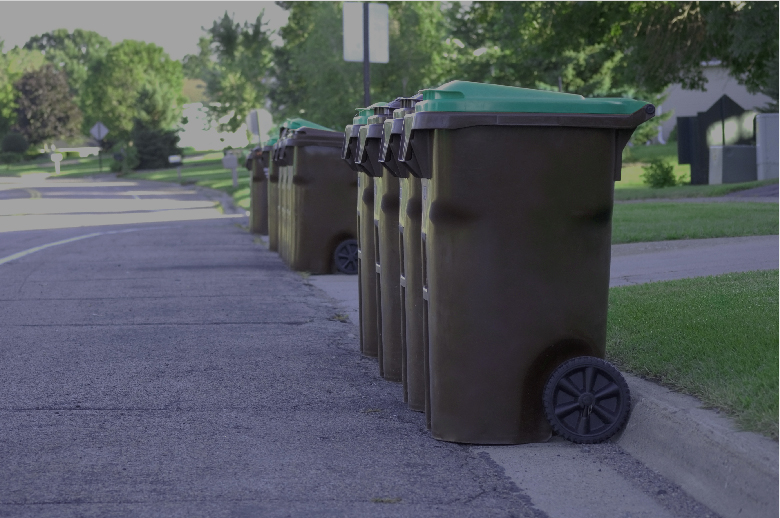While cities and towns across the country commit to smart systems for utilities, housing, and schools, recycling and waste service systems remain stagnant and resistant to innovation. On the residential side, many cities use outdated technology – or no technology at all – to plan service routes, pickup and drop-off points, and schedules. Since commercial entities are responsible for contracting with private haulers, the commercial recycling and waste industry tends to be highly fragmented and inefficient.
All of this means that cities’ waste collection routes are not optimized for reducing emissions and traffic, and that collection containers do not encourage reduced waste generation or increased recycling rates. RTS hosted a panel discussion at Smart Cities Connect to discuss background on the industry and its slow march to more intelligent solutions, ongoing challenges, and opportunities to create truly smart sanitation systems.
Innovation is lagging
Our discussion began with panelists agreeing that up to this point, waste and recycling innovation has not held pace with most smart city initiatives. Slow progress is due in part to municipalities and haulers placing a priority on short-term bottom line over long-term sustainability. Waste- and recycling-related expenses are low relative to other municipal services, so many municipalities wonder why they should make it a priority. For large hauling companies, who own many of the landfills, the majority of their profit is made from the landfill, not hauling, so there is little motivation for them to pivot from the status quo.
This focus on the bottom line has produced an RFP process that drives a race to the bottom. Historically, the hauler with the cheapest price typically wins the bid, regardless of their ability or willingness to innovate or act in an environmentally responsible way.
While price has traditionally driven the RFP process, external factors are beginning to influence innovation in municipal waste and recycling. Governments are enacting waste legislation and regulations due to increased public environmental awareness. Concurrently, China’s National Sword Policy, which severely reduced the amount of foreign waste and recycling they will accept from the US, has forced the industry to find solutions domestically, and towns and cities to adjust pricing expectations.
Smart waste management begins with the RFP
The panelists all agreed that reform must begin with municipalities’ RFPs. Municipalities should take a long-term view of their waste strategies and begin to demand more than just low prices from their haulers. RFPs should place an emphasis on requirements and transparency to ensure that diversion and service goals are being met.
What should be included in the RFP? From a requirements perspective, diversion targets should be well documented. Requirements municipalities should consider adding are:
- Recycling and trash weights
- Contamination rates and regularly scheduled audits
- Citizen education including contamination avoidance
- Waste generator aggregation and end facility documentation
- Truck routes optimization for efficiency and reduced greenhouse gas emissions
An organization called SWEEP (Solid Waste Environmental Excellence and Performance) provides standards and templates for sustainable waste management practices and contracts. Download the standards here.
With that said, simply driving change through the RFP process is not enough. Our historical dependence on shipping recyclable materials to China has prevented the development of robust Materials Recovery Facilities (MRFs) infrastructure across the US, and China’s recent import ban has forced towns and cities to reckon with the reality that recycling properly is a cost. Investment in modern MRFs with innovative processing technology, contamination filtering, and increased capacity is necessary to handle the increased volume of diverted material. Challenges to investment in a more sustainable MRF infrastructure include high costs and a potential lack of political inertia. To overcome these challenges, the panelists suggested standardization and collaboration amongst neighboring municipalities and operational effectiveness pilots on a smaller scale, while still utilizing existing infrastructure, before making a larger long-term investment.
Current and future innovations
There are many innovations currently available for municipalities to adopt that are relatively low-cost. Services such as weighing technology, tracking technology, on-demand removal, and contamination audits are options that municipalities can request to begin implementing progressive waste management solutions.
More high-tech innovations include optical sensors on trucks and at MRFs. Additionally, contamination filtering technology should be considered when investing in a modern MRF as we will never get to 0% contamination from changed individual practices alone.
While innovation in municipal waste and recycling has not progressed at an optimal pace, the panelists saw reasons to be optimistic. Increased awareness and public policy are driving change in both the private and public sectors. Thankfully, there are municipal leaders and companies that are hard at work addressing the challenges required to deliver a more sustainable waste and recycling future. Through innovation, investment, and education the waste management industry will become an integral part of the smart cities of tomorrow.
David Segall is the VP of Policy and Municipalities for RTS, where he helps municipalities bridge their evolving sustainability and service needs with innovative waste and recycling solutions. He is also an adjunct professor at NYU’s Stern School of Business and at NYU’s Graduate Program in International Relations, where he teaches undergraduate courses on supply chain responsibility and graduate courses on political psychology.


